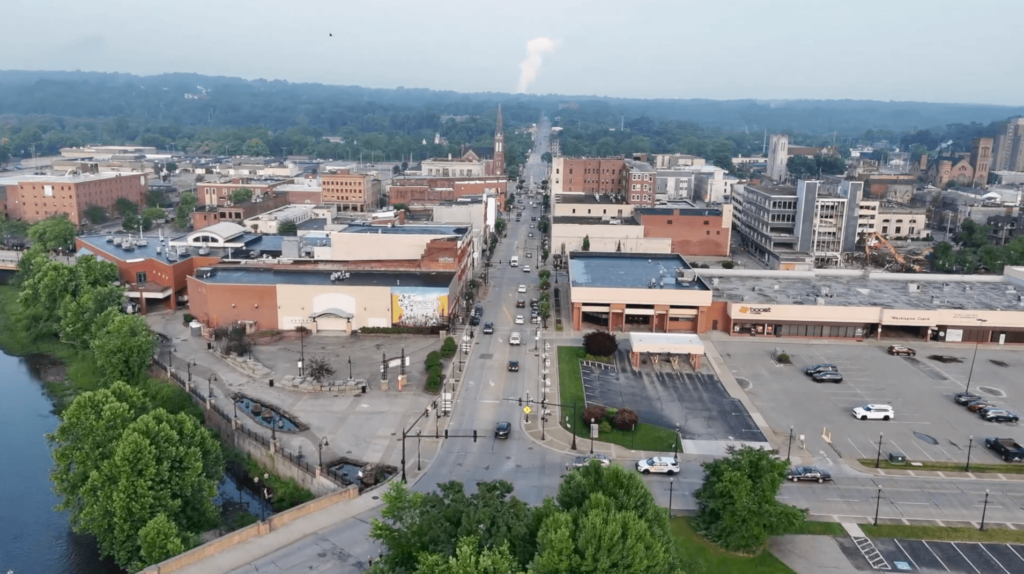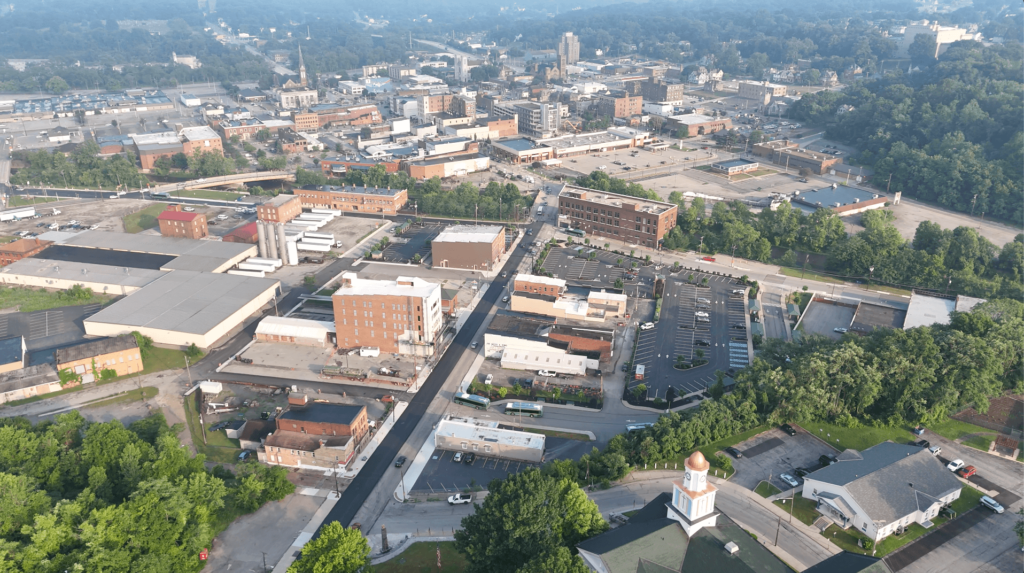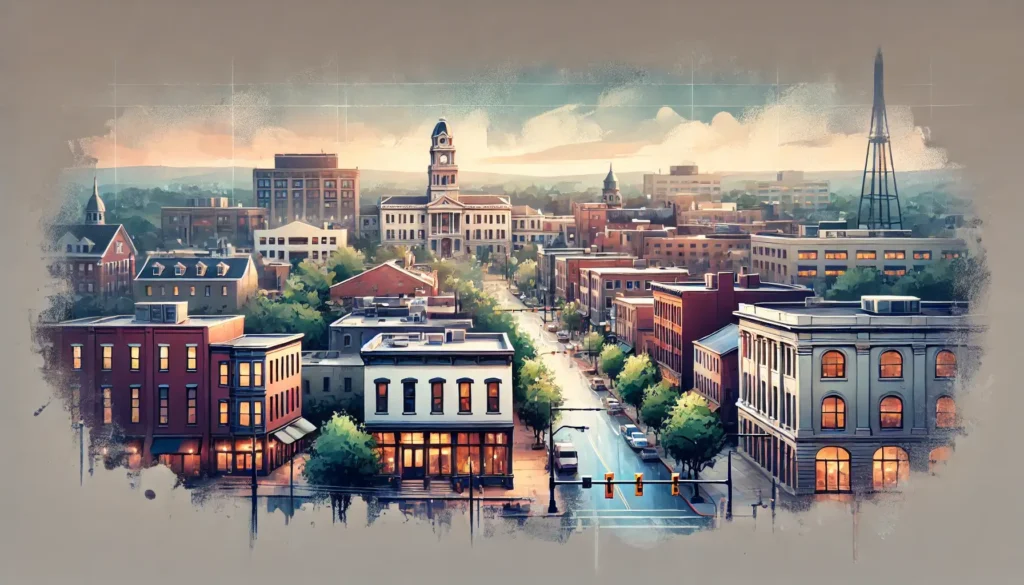Have you ever wondered how much a city’s past really shapes its future? New Castle, Pennsylvania, a city with deep roots and big ambitions, has seen its fair share of transformation. The city went through a period of urban renewal that sparked both progress and controversy in the mid 20th century, reshaping the landscape and impacting the lives of many residents. This era cleared out ‘blighted’ areas to make way for new developments, but it also left a trail of displaced communities and demolished landmarks.
Understanding what happened then is crucial as we stand on the edge of a new chapter in New Castle’s story. It’s not just about looking back; it’s about learning how the lessons of yesterday can guide the vision for tomorrow.
Whether you’re a local or an urban enthusiast, this is a story worth knowing. Below, I’ll share highlights from my recent podcast vlog that expands on how these lessons apply to our future projects in New Castle.
A Glimpse into the Past

New Castle was undergoing significant change in the 40’s, 50’ and 60’s. Driven by federal funding through programs like the Housing Act of 1949 and the Housing and Urban Development Act of 1965, the city embarked on a controversial urban renewal initiative. These programs targeted “blighted” areas, clearing away dilapidated structures to make way for new developments.
John Hitch, a photographer and historian, captured this transformation with stunning clarity. His photos document the demolition of iconic buildings like the Lawrence Savings & Trust Building and the Penn Theater, both of which were once central to New Castle’s industrial prosperity. While these projects aimed to bring progress, they also led to the displacement of many local residents, particularly from marginalized communities.

Urban renewal has always been a double-edged sword. As I mentioned in the podcast vlog, it often sparks debates around gentrification. Should we clear out deteriorated areas to make way for new developments, or should we find ways to uplift existing communities without displacement? Both sides have valid points, but what history shows us is that these projects need to be handled with care and foresight. Read more about the positive and negative effects of gentrification here.
Fast-Forward to Today

Now, let’s talk about the present. New Castle is once again on the cusp of transformation, but this time, we have the benefit of hindsight. Our city has seen the rise of new projects like Preeminence One—a mixed-use development of Metrovitalization that’s designed to breathe life back into downtown boosting the current revitalization trend of the city. As an urban planner, I believe we are better equipped to handle these changes now than we were in the past, largely because of lessons learned from earlier missteps.
The key to modern urban renewal is sustainability and community engagement. Unlike the top-down approaches of the past, today’s efforts involve close collaboration between city officials, developers, and residents. We want to ensure that new projects don’t just cater to businesses or affluent newcomers, but also benefit long-time residents. One strategy we’re implementing at Metrovitalization is the concept of Smart Growth, which emphasizes walkability, mixed-use developments, beautification, environmental sustainability, and public transit. Explore Smart Growth principles in urban development here.
The Vision for New Castle’s Future

Looking ahead, New Castle has the potential to follow in the footsteps of other revitalized cities like Greenville, South Carolina, and Pittsburgh, Pennsylvania. Both cities were once heavily industrial and faced decline, but through targeted investments in Smart Growth Developments, education, healthcare, and technology sectors, they were able to reinvent themselves and blossom into the thriving cities they are today.
Greenville focused on creating green spaces and mixed-use developments, while Pittsburgh invested in high-tech industries and preserved its historical heritage. Learn how Greenville transformed its urban core.
For New Castle, the path forward will involve a combination of historical preservation, new housing developments in key locations, and economic incentives for local businesses. One of the projects I’m particularly excited about is Kingdom Place, which is bringing new-construction energy-efficient homes and quality housing priced for middle-income families in an area of New Castle with an aged housing stock and a strong need for new quality homes that average families can afford. This development not only offers modern, beautiful homes but also fosters a sense of community and ownership. It’s part of a broader vision to revitalize the area without pushing out existing residents.
We’re also encouraging Public-Private Partnerships (PPPs), where collaboration between government entities and private developers drives urban growth. PPPs have proven successful in cities like Vancouver, where a cooperative approach between stakeholders resulted in vibrant, sustainable communities. View/Download “Public-Private Partnerships in British Columbia”, an in-depth report examines the role of public-private partnerships how Vancouver leveraged public-private partnerships, including major infrastructure projects over the past two decades.
Conclusion: A Unified Vision

In the podcast vlog, I emphasized the importance of unity in our efforts to revitalize New Castle. No single entity can achieve this alone. It takes a shared vision of prosperity, sustainability, and inclusivity. Whether you’re a resident, business owner, or developer, we all have a stake in New Castle’s future. Our goals—beautiful streets, quality education, thriving businesses, and strong community ties—are achievable if we work together.
As I said on the podcast vlog, New Castle’s Urban Renewal offers us a window into the city’s past—a past filled with ambition, but also with lessons learned the hard way. Let’s take these lessons and apply them to the opportunities that lie ahead. Together, we can create the vibrant, prosperous city we all dream of.
Be sure to tune in to the full podcast vlog on YouTube and don’t forget to grab your copy of New Castle’s Urban Renewal from the Lawrence County Historical Society.
Let’s keep the conversation going—what are your thoughts on New Castle’s past and future? Share your insights in the comments below or join our newsletter for more updates on upcoming projects and developments.
About

Ricky Trinidad is an Official Member of the Forbes Business Council and the Modular Home Builders Association, and President of Metrovitalization, an urban planning, development, and construction company in Pennsylvania that specializes in sustainable and community-conscious real estate development, focusing on revitalizing areas physically, economically, aesthetically, spiritually, and environmentally with a unique approach that integrates high-quality construction with a commitment to community enhancement.
Hashtags
#NewCastleRevitalization #UrbanRenewal #SmartGrowth #SustainableDevelopment #UrbanPlanning #CommunityEngagement #DowntownRevitalization #HistoricPreservation #MixedUseDevelopment #PreeminenceOne #KingdomPlace #RoyaltyPlace #RoyaltyCamping #Metrovitalization #CityRevival #LocalBusinesses #RealEstateInvesting #EconomicDevelopment #RetailSpaces #ResidentialLiving #ModernLiving #SustainableLiving #UrbanTransformation #SmartCity #ResilientCities #RickyTrinidad #ForbesBusinessCouncil #ModularHomeBuilders #NewCastlePA #UrbanRevitalization #CommunityGrowth



